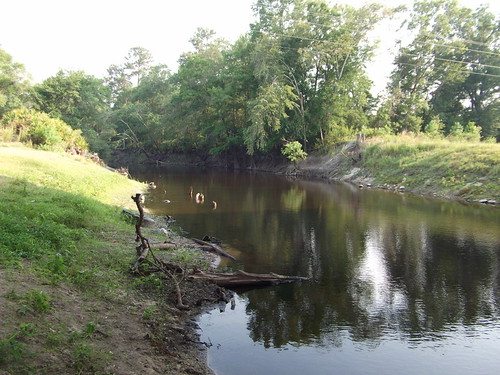Here’s the video: Continue reading…the nexus between sustainability and job creation. Every now and then, perhaps once in a generation, there presents itself a moment, an opportunity, for those cities that are willing to seize it, to truly benefit the region for generations to come.
Category Archives: Climate change
San Antonio promises to shut down a coal plant
At an event this afternoon at UT-San Antonio, Mayor Julian Castro announced a suite of green energy projects that he said would position San Antonio as the nation’s “recognized leader in clean energy technology” and help fulfill his aggressive environmental goals.
Most notably, Castro and leaders from CPS Energy, the city-owned utility, pledged to shut down one of its coal-fired power plants 15 years ahead of schedule. By 2018, the city would mothball the 871-megawatt J.T. Deely Power Plant — a bold move in a growing state that’s seemingly addicted to coal.
So what are they going to use for energy? Continue reading
Detroit cuts power due to heat: too bad they didn’t have solar
Too bad they didn’t have solar, which would have provided peak power at peak load.Detroit officials intentionally cut power to city hall and a convention center Thursday to prevent the municipal power system from crashing from high energy demand — even though temperatures had tapered to the 70s after two days above 90. Equipment failures knocked out power to several other government buildings and traffic lights in parts of the downtown.
“Because there was a short window of time, we had to make a decision to take some of our customers off to prevent a blackout of the entire city,” Detroit mayoral spokeswoman Karen Dumas said.
-jsq
Wide but shallow: Withlacoochee River @ GA 122
Look a hundred feet farther downstream: Continue reading
Lowndes County is disaster area —Gov. Deal
Amber Eady wrote for WALB, Deal requests disaster designation for Lowndes County:
Gov. Deal sent a letter to the U.S. Secretary of Agriculture Tom Vilsack asking that 22 Georgia counties be declared disaster areas because of Georgia’s ongoing drought.
Lowndes County was on that list of 22 counties that Deal wants to be declared as disaster areas.
-gretchen
Southern Company “bullish” on solar
I’ve seen this before. AustinEnergy went in one year from solar isn’t an option to Continue readingTwo years ago, Southern Co. claimed “Renewable energy sources like wind and solar are not really an option for us in the Southeast.”
Now the new CEO, Thomas Fanning, says he’s “bullish” on solar. While the new attitude on solar is refreshing,
VSU Faculty Senate passes anti-biomass resolution
Why? Because leading medical associations have identified woody biomass incineration as increasing risks of “a variety of illnesses, some life-threatening”, because biomass incineration produces more CO2, NOX, and fine particulates than existing coal plants, and because it “may lead to unsustainable forestry practices and a net increase in global greenhouse gas emissions”.
Who proposed this? Continue reading
What do “the indigenous” think about solar?
Continue readingThe 3,000 members of the Jemez Pueblo tribe in New Mexico are looking to build the first utility-scale solar power plant on tribal land. They are also looking to make some money on it.
It is no secret that Native American tribes are more likely to be poverty-stricken and they generally have more than twice the unemployment rate of the United States. Former Jemez Pueblo governor James Roger Magdalena says, “We don’t have any revenue coming in except for a little convenience store.”
It is estimated this solar power plant could generate $25 million over the next quarter century and help create a sustainable revenue for his tribe.
Mr. Magdalena sees the environmental changes
Tornado Warning in Lowndes County right now
This is at least the second time this month; here another tornado warning for Lowndes County, from 5 April 2011: Continue reading
Energy reliability: let’s do the study for Georgia
 As Plant Vogtle and others
have just demonstrated,
nuclear power isn’t as reliable as we might have thought.
Mark Z. Jacobson says we can generate reliable power from
wind, water, and sunlight alone.
Will that work in Georgia?
As Plant Vogtle and others
have just demonstrated,
nuclear power isn’t as reliable as we might have thought.
Mark Z. Jacobson says we can generate reliable power from
wind, water, and sunlight alone.
Will that work in Georgia?
Elsevier’s policy of charging for peer-reviewed articles from scientific journals is controversial, and some people find $19.95 prohibitive to access Mark Z. Jacobson and Mark A. Delucchi’s Providing all global energy with wind, water, and solar power, Part I: Technologies, energy resources, quantities and areas of infrastructure, and materials from Energy Policy Volume 39, Issue 3, March 2011, Pages 1154-1169. Fortunately, the same authors wrote an earlier version for Scientific American, 26 October 2009, A Plan to Power 100 Percent of the Planet with Renewables: Wind, water and solar technologies can provide 100 percent of the world’s energy, eliminating all fossil fuels. Here’s how
A new infrastructure must provide energy on demand at least as reliably as the existing infrastructure. WWS technologies generally suffer less downtime than traditional sources. The average U.S. coal plant is offline 12.5 percent of the year for scheduled and unscheduled maintenance. Modern wind turbines have a down time of less than 2 percent on land and less than 5 percent at sea. Photovoltaic systems are also at less than 2 percent. Moreover, when an individual wind, solar or wave device is down, only a small fraction of production is affected; when a coal, nuclear or natural gas plant goes offline, a large chunk of generation is lost.Continue reading

